Chao, Ecuador! Hello, U.S.!
It has been 2 months of hard work, experimentation, research, exploration, odd incidents, unique cuisine and gorgeous sights. This has been a wonderful and memorable experience for the both of us and we are going to miss the beautiful country of Ecuador and everyone in it so much. The reason that our work there was so enjoyable was because of the wonderful people who were there to help us along the way. We would like to thank Maria Alicia, first and foremost, for lending us her home, knowledge, time and money, and for also being our trusty chauffeur and tour guide when we would have been utterly lost otherwise. Thanks to Marisol, for being a great resource for us for our many projects, and to Martita for being our Mamita when we were so far from our own. Thank you to all the doctors and nurses at the clinic in Yatzaputzan who gave us such helpful feedback and ideas for the technologies. And a huge thank you to everyone in Planchaloma, including the doctors, promoters, nurses, volunteers, and even the patients and people of the town for making us feel at home, for complementing our elementary-Spanish, for letting us feel useful at the clinic, and for all the fun times and laughs we’ve had together. Last, but most certainly not least, thank you BTB, for allowing us to have such a life-altering, eye-opening, and enjoyable learning experience; without the time, money, hard work, planning, efforts, that everyone there has put into this program, this would not have been possible for us.
We hope that we have accomplished enough to make even the smallest difference. We have learned a great deal and will be sure to pass that knowledge on to BTB and to future interns in order so that the next technologies that go to Ecuador will be Ecuador-ready and able to help to many throughout the country. We hope that we have made an impact, however small, in the communities and have made BTB and Fundacion Futuro proud to have had us as interns.
Chao, Ecuador! Don’t forget us, because we will most certainly never forget you.


 I am a sophomore at Hanszen College taking on a full load of courses and extracurriculars (isn't every Rice student?), and a vegetarian who loves to run, eat, read, travel, and try new things. I am Pre-Medicine, a potential Kinesiology major, and a Global Health Technologies minor.
Through the Global Health Program, I became part of a group that invented and patented a small plastic clip for oral syringes, which we dubbed the Syringe AccuDose, which can be used to prevent overdosing in liquid medication. This project was definitely a challenge and consisted of a lot of hard work from myself and my 2 other co-inventors. I believe it was the beginning of somethings great, not just in the development of a simple solution to a prevalent problem, but also in the way that it showed me what I am capable of if I simply put in the effort, time, and hard-work. Ultimately, this program has shown me that while anyone can make a difference, there is a reality that the difference made may not be as large as initially hoped. However in the long run, even the smallest difference can pave the way for an even larger impact in the future.
Now, I invite you to enjoy reading of my time in the beautiful country of Ecuador, to which my co-intern, Lila, and I brought 2 technologies developed by former Rice students, the CHO and OB/GYN backpacks. These packs will be field-tested by doctors to determine their usefulness, what they lack, and which of the tools and tests inside are used the most, the least, or if they are even translatable at all to the need expressed in Ecuador.
I am a sophomore at Hanszen College taking on a full load of courses and extracurriculars (isn't every Rice student?), and a vegetarian who loves to run, eat, read, travel, and try new things. I am Pre-Medicine, a potential Kinesiology major, and a Global Health Technologies minor.
Through the Global Health Program, I became part of a group that invented and patented a small plastic clip for oral syringes, which we dubbed the Syringe AccuDose, which can be used to prevent overdosing in liquid medication. This project was definitely a challenge and consisted of a lot of hard work from myself and my 2 other co-inventors. I believe it was the beginning of somethings great, not just in the development of a simple solution to a prevalent problem, but also in the way that it showed me what I am capable of if I simply put in the effort, time, and hard-work. Ultimately, this program has shown me that while anyone can make a difference, there is a reality that the difference made may not be as large as initially hoped. However in the long run, even the smallest difference can pave the way for an even larger impact in the future.
Now, I invite you to enjoy reading of my time in the beautiful country of Ecuador, to which my co-intern, Lila, and I brought 2 technologies developed by former Rice students, the CHO and OB/GYN backpacks. These packs will be field-tested by doctors to determine their usefulness, what they lack, and which of the tools and tests inside are used the most, the least, or if they are even translatable at all to the need expressed in Ecuador.
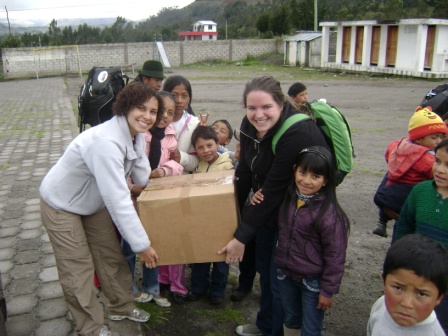 Wednesday marked our first day back in Planchaloma and another medical brigade to Yugsiche Alto. This time we were accompanied by Maria Alicia, Monica, a gynecologist at the clinic, and Don Juan, another health promoter from Planchaloma. When our truck pulled up to the school, we were greeted by a mass of smiling kids running up to greet and hug us. They even remembered our names! Once we got them to settle down a bit, Maria Alicia reviewed with the kids and parents what Lila and I had taught them the last week about hand hygiene and recycling. And they did very well on their little quiz! They remembered the important points that we covered the in our lesson week before. This is great news for Lila and me: our ‘charlitas’ with the kids are a success! The kids are actually learning and retaining the knowledge that we give them. Now, we just hope that they are using it as well.
Wednesday marked our first day back in Planchaloma and another medical brigade to Yugsiche Alto. This time we were accompanied by Maria Alicia, Monica, a gynecologist at the clinic, and Don Juan, another health promoter from Planchaloma. When our truck pulled up to the school, we were greeted by a mass of smiling kids running up to greet and hug us. They even remembered our names! Once we got them to settle down a bit, Maria Alicia reviewed with the kids and parents what Lila and I had taught them the last week about hand hygiene and recycling. And they did very well on their little quiz! They remembered the important points that we covered the in our lesson week before. This is great news for Lila and me: our ‘charlitas’ with the kids are a success! The kids are actually learning and retaining the knowledge that we give them. Now, we just hope that they are using it as well. During the brigade, the doctors from the clinic, including Lorena and Monica, took every child’s height and weight. Sandra, a health promoter in training, sat behind a small table and gave the kids bottles of multivitamins. Monica also gave all of the kids de-parasiting pills, which essentially will detox them of all the parasites that linger in their bodies and could potentially cause them extreme harm. Lila showed the ever-curious kids all of the devices in the backpack and how they worked. She also took care of various cuts, scrapes, and burns that the kids complained to her about by using the First Aid items in the CHO pack. After the wounds were taken care of, the kids found serious interest in Sally, which she demonstrated to them and let them take turns pushing the button for the allotted 10 minutes. I had most, if not all, of the adults ask me to take their blood pressure and glucose, a few of them telling me they were concerned about their health because of diabetes. I used the glucometer, test strips and antiseptic wipes from the Lab-in-a-Backpack to test their blood glucose levels and also used the blood pressure cuff from this backpack. There were no more lancets in the Lab-in-a-Backpack, so I used the ones from the CHO pack. I tested over 25 people and of these, one woman had a glucose level of 319. This is extremely high, given that normal is between 80 and 120. When I told her this, she said she knew that she has diabetes and has painful headaches all of the time. I asked her if she had medicine for this or if she had even been to the clinic to see a doctor about her condition. She responded no because she didn’t know that they could help her or give her medicine.
During the brigade, the doctors from the clinic, including Lorena and Monica, took every child’s height and weight. Sandra, a health promoter in training, sat behind a small table and gave the kids bottles of multivitamins. Monica also gave all of the kids de-parasiting pills, which essentially will detox them of all the parasites that linger in their bodies and could potentially cause them extreme harm. Lila showed the ever-curious kids all of the devices in the backpack and how they worked. She also took care of various cuts, scrapes, and burns that the kids complained to her about by using the First Aid items in the CHO pack. After the wounds were taken care of, the kids found serious interest in Sally, which she demonstrated to them and let them take turns pushing the button for the allotted 10 minutes. I had most, if not all, of the adults ask me to take their blood pressure and glucose, a few of them telling me they were concerned about their health because of diabetes. I used the glucometer, test strips and antiseptic wipes from the Lab-in-a-Backpack to test their blood glucose levels and also used the blood pressure cuff from this backpack. There were no more lancets in the Lab-in-a-Backpack, so I used the ones from the CHO pack. I tested over 25 people and of these, one woman had a glucose level of 319. This is extremely high, given that normal is between 80 and 120. When I told her this, she said she knew that she has diabetes and has painful headaches all of the time. I asked her if she had medicine for this or if she had even been to the clinic to see a doctor about her condition. She responded no because she didn’t know that they could help her or give her medicine. 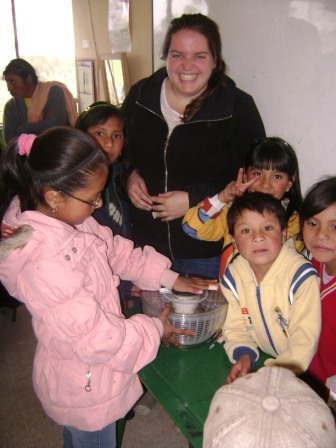
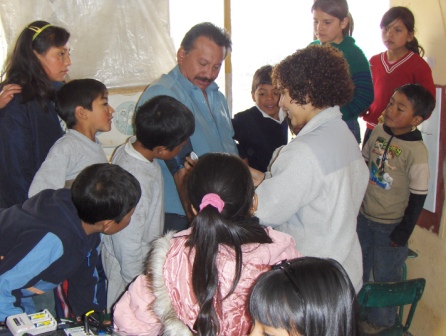

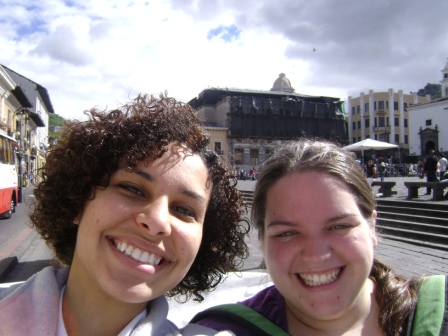
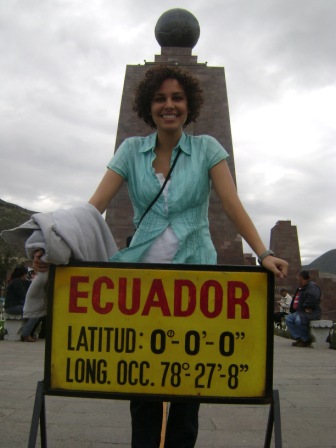
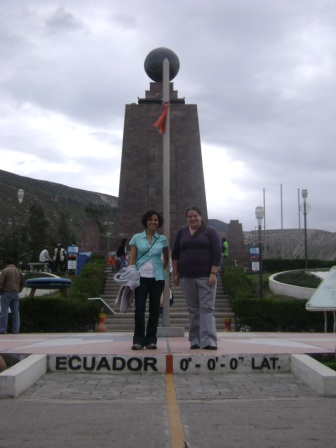
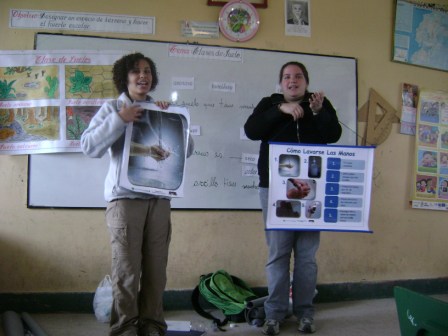
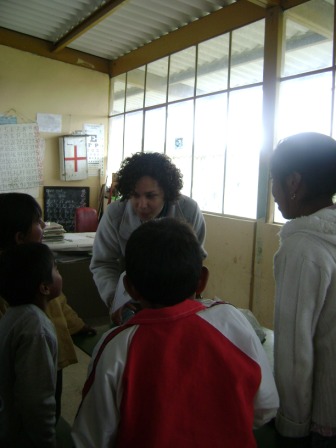
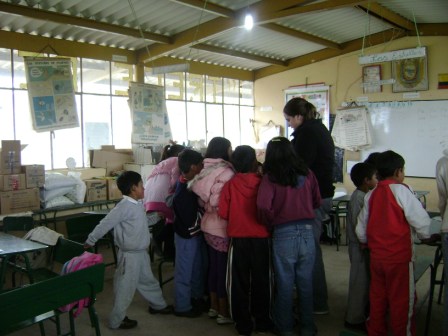
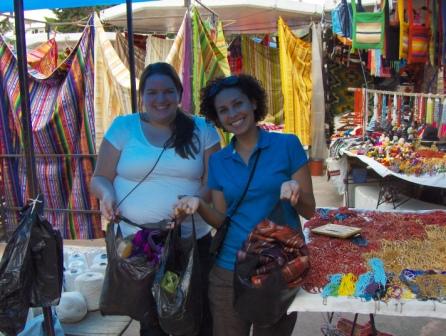
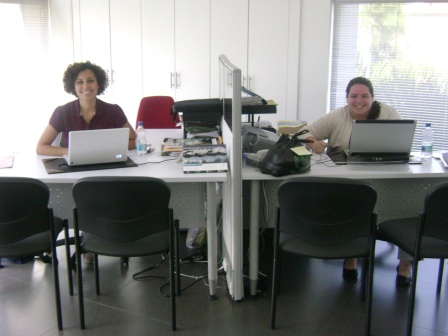




 After departing later than scheduled, taking a detour into Guayaquil Airport due to “mal tiempo en Quito”, and spending almost 10 hours sitting on Continental Flight 653, we finally arrived in the gorgeous capital city of Ecuador that is Quito.
After departing later than scheduled, taking a detour into Guayaquil Airport due to “mal tiempo en Quito”, and spending almost 10 hours sitting on Continental Flight 653, we finally arrived in the gorgeous capital city of Ecuador that is Quito.